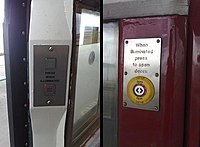Retrofitting is the addition of new technology or features to older systems. Retrofits can happen for a number of reasons, for example with big capital expenditures like naval vessels, military equipment or manufacturing plants, businesses or governments may retrofit in order to reduce the need to replace a system entirely. Other retrofits may be due to changing codes or requirements, such as seismic retrofit which are designed strengthening older buildings in order to make them earthquake resistant.
Retrofitting is also an important part of climate change mitigation and climate change adaptation: because society invested in built infrastructure, housing and other systems before the magnitude of changes anticipated by climate change. Retrofits to increase building efficiency, for example, both help reduce the overall negative impacts of climate change by reducing building emissions and environmental impacts while also allowing the building to be more healthy during extreme weather events. Retrofitting also is part of a circular economy, reducing the amount of newly manufactured goods, thus reducing lifecycle emissions and environmental impacts.

